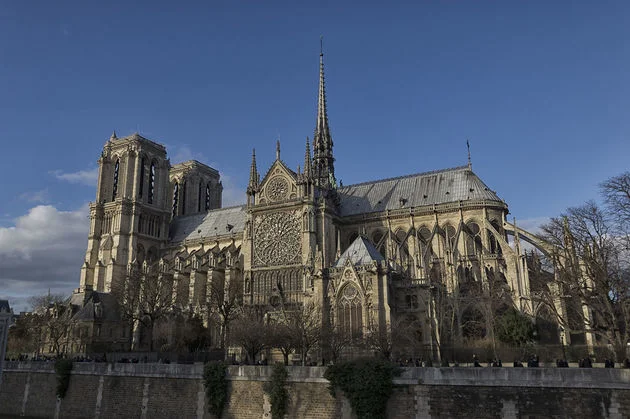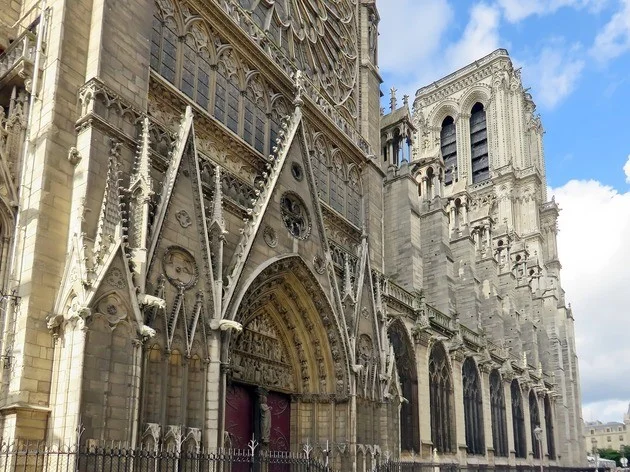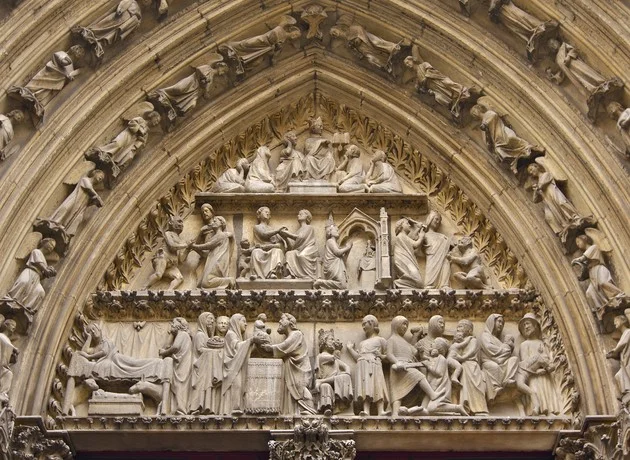Everything you didn't know and more about one of the oldest and most valued monuments in Europe. Star of one of the last disgraces of the heritage of humanity, after the disaster in which it fell victim in 2019.

Information
Built between 1163 and 1245 on the Île de la Cité, the Cathedral of Notre Dame de Paris is one of the oldest Gothic cathedrals in the world. The cathedral's name means Our Lady and is dedicated to the Virgin Mary.
Important events have been celebrated in Notre Dame, including the coronation of Napoleon Bonaparte, the beatification of Joan of Arc and the coronation of Henry VI of England.
On April 15, 2019, Notre Dame Cathedral suffered a serious fire that caused major damage to the roof and brought down the spire of the main tower.

Although most tourists are satisfied with the usual photo, there are always those who stop to discover what is hidden behind that "lady of stone", as many call it. Who made it possible and where did they find the inspiration for such a work? What characterizes it? What is its meaning?
The Ile de la Cité in Paris, site of the cathedral, is a small island in the middle of the Seine River, which centuries ago had been a place of Celtic and Roman worship. There was even a temple dedicated to Jupiter.
After the Christianization of Europe, a Romanesque church known as Saint Etienne was also built, but with the cultural change that made possible the formation of cities, soon appeared the interest to build a church according to the new times. This would be the Gothic cathedral of Notre Dame.
The project was promoted by Bishop Maurice de Sully during the reign of Louis VII. He had the support of the king and the economic participation of all the social classes of Paris, thanks to which the work did not suffer interruptions. It was inspired, as was proper at the time, on the model of the Abbey of Saint Denis, where Abbot Suger had first applied the so-called "aesthetics of light", the heart of Gothic art.
Characteristics
The cathedral of Notre Dame de Paris was built in the middle of narrow streets and many houses, nothing to do with the open space that surrounds it today. Any mortal who looked out the door of his house before the 19th century would immediately feel the undeniable grandeur of that mass full of symbols, legends and stories.
Therefore, the first outstanding feature of this work is its monumentality and symbolic power, but in all honesty, this is how Gothic art used to be. With a theocentric worldview, every space in a Gothic building was diligently cared for and, even if it had no function, it received the painstaking attention of craftsmen who believed that God was watching them.
The mentality of its builders was this: to give all dignity to the work as an offering to God. That is why Gothic art is a prayer of stone. The prayer begins when the cathedral is dedicated to the Virgin Mary or Notre Dame (Our Lady, in French). The Marian cult reached its peak in those years. Mary, the mother of God, found resonance in a society in which women, increasingly alone because of the crusades, were involved in spirituality in a different way. This coincided with the birth of theological humanism, which opened the way to the perception of a closer God and the vindication of the sensible world (creation) as an expression of divine light.
South Front

Like the north façade, the portico on the south façade, the other end of the transept, is crowned by a gable. The portico is dedicated to St. Stephen and, like all the previous ones, is made up of three registers. In the upper register, Jesus can be seen with his angels contemplating the martyrdom of St. Stephen. The lower registers relate the life and martyrdom of St. Stephen.
North Front

On the north façade, facing rue du Cloitre, we see one of the transept doors. The portico is framed in a gable, a type of triangular and cambered finial, often used to decorate the openings and windows of Gothic churches. In this case, each façade has a set of three gables, properly hierarchized.

In the pediment, the Virgin and Child are represented in the mullion, but the sculpture is incomplete. The tympanum is dedicated to the monk Theophilus of Adana, whose story is represented in the upper and middle bands.
The story goes that Theophilus of Adana was a monk who had been commissioned to become abbot, but chose to remain archdeacon. The new abbot removed him from his post and Theophilus, in desperation, made a pact with the devil with the help of a Jew, in order to impose himself on the abbot. Seeing the damage he had done, Theophilus repented and was freed by the help of the Virgin Mary.
In the lower register or band, the infancy of Jesus is represented: his birth, the presentation in the temple of Jerusalem, the slaughter of the innocents and the flight to Egypt.